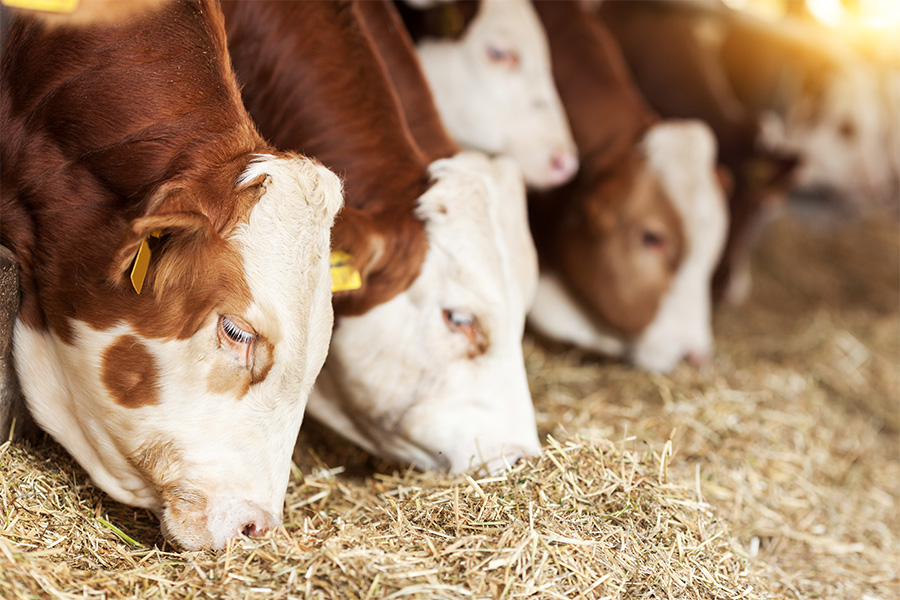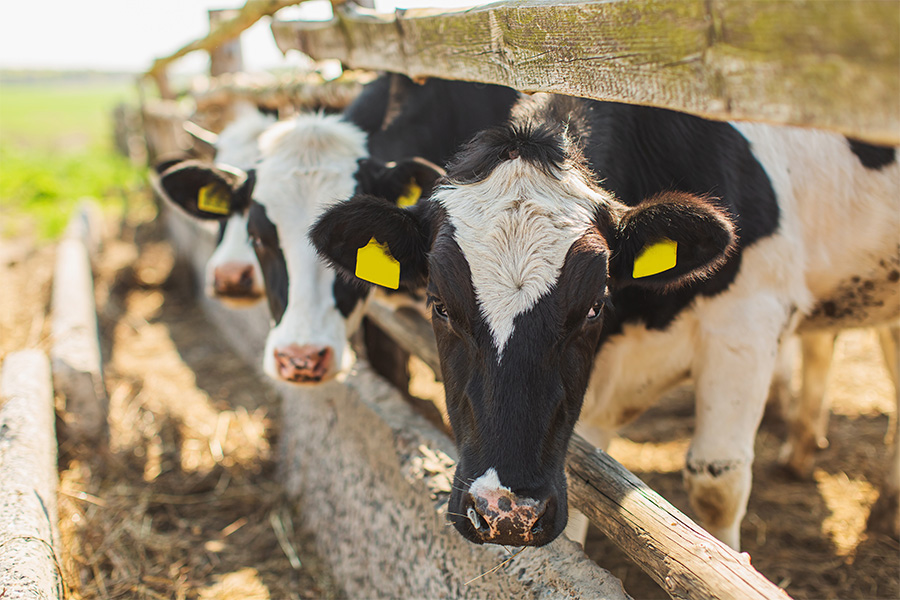Animal Production
-

Reproductive efficiency has long been recognized as the most important aspect of commercial beef production. This publication explains how improved herd management and selection for reproductive performance can substantially increase the percent calf crop.
Lawton Stewart and Ted Dyer
|
-

Calving difficulty, otherwise known as dystocia, may result in reduced calf performance, delayed estrus and, in some cases, loss of the calf and/or dam. This publication discusses several factors affecting calving difficulty and provides management suggestions that may be useful to prevent its occurrence.
Tim Wilson, Lawton Stewart, Ted Dyer, and Johnny Rossi
|
-

B 1315
Creep Feeding Beef Calves
Creep feeding is the practice of providing supplemental feed (grain or forage) to nursing calves. This is usually done with the use of a creep gate, which is large enough for calves to enter the feeding area but too small to allow cows to pass. Creep feeding systems vary from grain-based energy supplements to limit-fed protein supplements to creep grazing. Each system generally produces increased growth, which may or may not be profitable. Creep feeding, like any other supplementation practice, must be analyzed based on estimates of expected increases in performance and income compared to the costs of these improvements. This publication discusses the advantages and disadvantages of creep feeding.
Lawton Stewart
|
-

Beef cattle require a number of minerals for optimal growth and reproduction. Selecting the correct mineral supplement is important for maintaining healthy animals, and optimal growth and reproduction.
Lawton Stewart
|
-

Drought conditions are a yearly occurrence in Georgia and have been prolonged in several areas over the past several years. These conditions can have severe impacts on cattle, and every cattleman should have a plan in place to minimize the effects of drought on the farm’s finances. This publication describes several management strategies for producers to consider during drought conditions.
Robert Stewart, Lawton Stewart, Ted Dyer, Ronald Silcox, and Johnny Rossi
|
-

Water is the most important nutrient for cattle. It accounts for 50 to 80 percent of an animal’s weight and is involved in every physiological process. Cattle cannot adapt to water restriction and feed intake greatly decreases if water is restricted. Water availability and quality can become a major issue during a drought. It is important to check water sources frequently for water availability and quality during a drought.
Lawton Stewart, Ted Dyer, and Johnny Rossi
|
-

Cutting costs allows producers to survive during trying times and also teaches valuable lessons that may actually increase profits in future years. Cutting corners, on the other hand, may save some money in the short-run but ultimately will have very detrimental effects.
R. Lacy, Dennis Hancock, Lawton Stewart, Ronald Silcox, and Glendon Harris
|
-

White striations in broiler breast meat tend to reduce customer confidence because severe white striping means that the cooked meat will be tougher than meat with low white striping. There is also higher fat content in meat with severe white striping. Consumers will not buy broiler breast meat with high fat and moderate to severe white striping because it is inferior in quality and nutritional value. This can cost the poultry industry significantly. Research has shown that this undesirable trait is particularly prevalent in broilers that have grown to a high body weight over a short period of time. Further research is needed to develop growing and feeding regimens to produce a heavier bird without changes in muscle quality, such as white striping.
Anand Mohan
|
-

This guide is designed to help you improve your reasons for your placings in dairy cattle evaluations. Slowly incorporate new terms into your oral reasons and your ability to describe what you see will continue to improve. Concentrate on what you see instead of what you don’t see. You only have 2 ½ minutes to justify your placings. Use I.D. points, and Practice! Practice! Practice!
William Graves
|